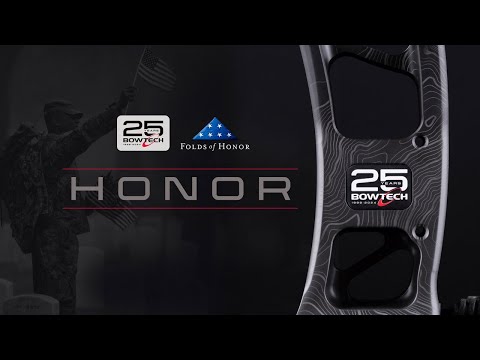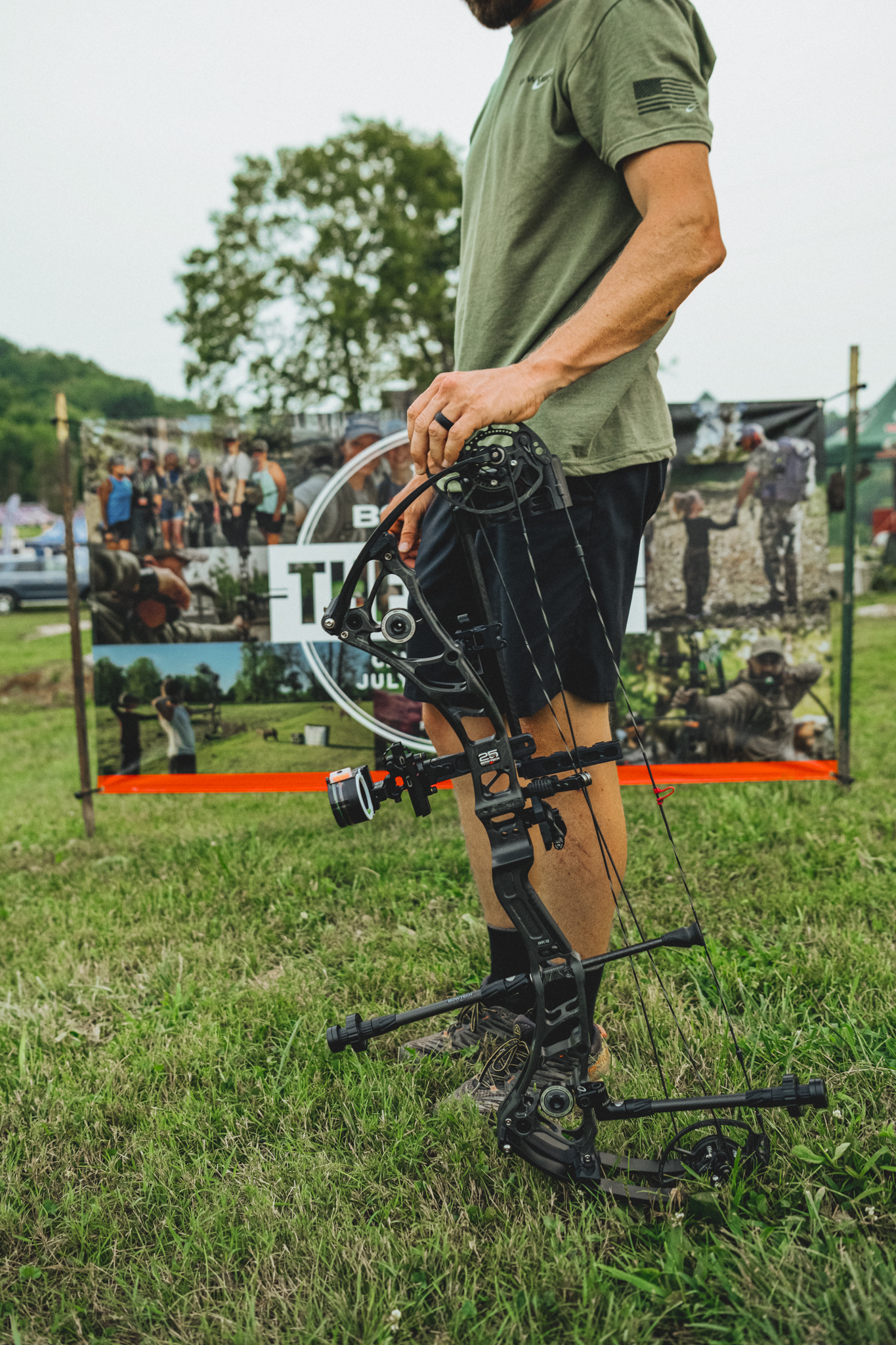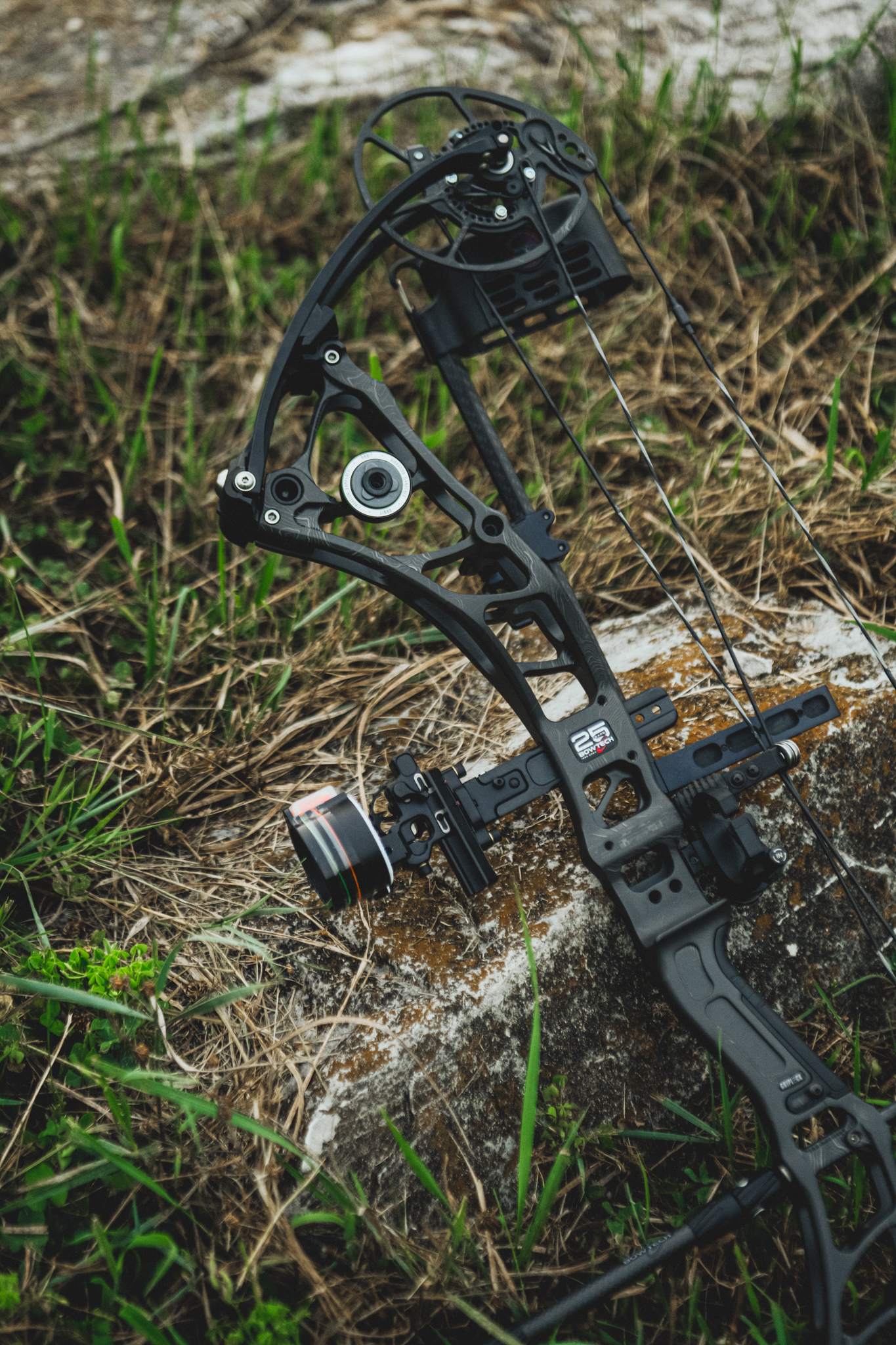The New Bowtech Honor Utilizes a Remarkable Riser Material That Could Shake Up the Compound Archery World
We may earn revenue from the products available on this page and participate in affiliate programs. Learn More ›
This weekend Bowtech celebrated its 25th anniversary with a big 3D archery event in Kentucky, and the star of the show was a new, limited edition bow called the Honor. The spirit of this anniversary bow was meant to capture Bowtech’s most advanced designs and innovations, and one of these upgrades includes a brand-new riser material that is truly remarkable, and could impact bow design and performance in the years to come.
Much of the initial reaction around the Honor bow seems to focus on price, which is a shocking $4,000. But that cost includes Bowtech’s very best features like Deadlock, Timelock, and Griplock, plus a superb cerakote finish, custom Gas bowstrings, and detailed laser engravings on the riser and cams. The package also includes a top-end sight, rest, stabilizer kit, quiver, Pelican case, and a custom hanger for the bow. Realistically, a lot of high-end compound bow setups cost about $4,000 when all is said and done.

More importantly, the fixation over price obscures the marvel that is a brand new magnesium-alloy riser material that Bowtech is calling AeroMag. I got a chance to shoot the Honor bow and chat with Bowtech’s director of product management about the AeroMag riser. Here’s what all compound bow geeks should know about it.
Incredibly Light and Vibration Free
The first thing I noticed about this bow was how incredibly light it is. Even with a 32-inch axle-to-axle measurement, it has a mass weight of only 3.6 pounds. For reference, that’s the same weight as PSE’s carbon-riser Mach 30 DS (which is only 30-inches axle to axle). The Mathews 29.5 Lift, which is considered an impressively lightweight aluminum bow, weighs 3.99 pounds.
This incredible weight reduction is thanks to the new AeroMag riser, which is somehow both light and vibration free post-shot. To understand why, we’ve got to dive into the details of riser material.
Historically, magnesium risers are used in budget bows and are typically diecast (which means the magnesium metal alloy is melted and poured into the shape of the riser). These cast risers usually require more material (they tend to be bulky) and can be susceptible to issues.

Photo provided by Bowtech.
On the flipside, the new Bowtech riser is machined, like aluminum bow risers. CNC machining allows for a precise and perfect end product.
But there’s quite a bit more to the magic of the AeroMag riser. According to Senior Director of Product Management Jeff Suiter, the research and development team at Bowtech discovered a supplier that creates a proprietary alloy that includes magnesium, aluminum, and rare earth elements. This specific magnesium alloy has been used in the aerospace industry and has only recently become available at the consumer level, according to Bowtech.
In short, the strength-to-weight ratio is far superior to any riser material that Bowtech has ever used before.
“The alloy that we selected has literally the best properties I’ve ever seen on a magnesium alloy,” says Josh Stevens, a design engineer at Bowtech. “I mean, this is the premium stuff.”
Oftentimes, the problem with light bows is that they vibrate like a tuning fork post shot. But I found that to be the exact opposite with the AeroMag riser. At the event in Kentucky, I did a quick five-foot shooting test with the AeroMag Honor, an aluminum Core SR, and Bowtech’s Carbon One (which of course has a carbon riser).
All three bows were set up with similar stabilizers and accessories and I shot them head to head. It was immediately obvious that the Honor bow with the AeroMag riser vibrated the least (as expected, the aluminum bow vibrated the most). I would describe the experience of shooting the new Honor bow as something close to pure joy. After I did my shooting, I watched a handful of other archers shoot the new bow as well. When they first picked it up, they extolled about how light it was. Then they stood gobsmacked, grinning like fools, at how dead it was in the hand.
I would love to shoot this AeroMag riser against top carbon bows from PSE and Hoyt, which have also proven to be supremely dead in the hand (my hunch is that Bowtech Honor would give them a good run for their money).
Remember that bowhunters want their risers to be strong, light, and stiff. But often, the stiffer you make a riser, the more vibration it will have post-shot. While the new AeroMag material isn’t quite as stiff as aluminum, it dampens vibration exponentially better, according to Bowtech.
“It has to do with the structure of the material itself, like how those atoms are arranged,” says Stevens. “It just dampens vibration more efficiently… It’s an investment in optimal material.”
The Rise of a New Material?

Photo provided by Bowtech
You’re not going to see AeroMag risers flooding your local bow shop this fall (but if you do see an Honor bow, you owe it to yourself to test shoot it). Bowtech is only making 250 of them. And According to the company, no other major compound bow maker is using this exact type of riser material, however Expedition and Obsession are working with a similar magnesium alloy.
With that said, I would not be surprised if in the not-so-distant future we’ll see a Bowtech flagship with an AeroMag riser. If the company can figure out how to produce risers from this material at a cost similar to that of current carbon-riser bows, we’re going to have an interesting showdown on our hands.
In the past many archers favored heavy bows, because they were easier to hold steady on target and they didn’t feel jumpy post-shot. But in the last three consecutive years, the most accurate bows in our annual bow tests have been relatively light carbon-riser bows. The takeaway here is that it’s very possible to have a supremely light and impressively accurate bow. There’s much more that goes into the accuracy formula than simply weight, brace height, and axle-to-axle length.
Read Next: Best Compound Bows, Tested and Reviewed
I genuinely hope that in the future Bowtech will deliver a widely-produced flagship AeroMag riser bow that is as light as carbon, as perfectly machined as aluminum, and boasts top-end accuracy. Because whatever that bow ends up costing, it will likely be well worth it.
The post The New Bowtech Honor Utilizes a Remarkable Riser Material That Could Shake Up the Compound Archery World appeared first on Outdoor Life.
Source: https://www.outdoorlife.com/gear/bowtech-honor-riser-material/



